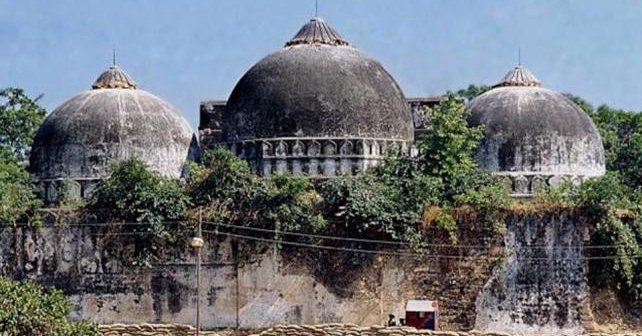Last week’s fracas following Congress leader and senior lawyer Kapil Sibal’s plea in the Supreme Court that the hearing in Ayodhya title suit be deferred till 2019 general election, and the perceptible shift of some so-called secular parties towards soft Hindutva of late, has once again brought to the fore the fact that for political parties of all hues, the Ram temple issue is not a matter of faith but a blank cheque to be encashed every poll season, Reports Vipin Agnihotri in Governance Democracy & Politics (GDP), December Issue
Simply put, 6 December 1992 marked a shift in the journey of contemporary India and its democracy. Twenty-five years have passed since the vandalism at Ayodhya resulted in the demolition of the Babri Masjid. Just as the complete site was previously “locked” under court orders since 1948, the deeper importance of the events of 1992 has been locked out of the collective memory of the nation. This time, the locking out has happened not through a court order, but willful amnesia and a slow redefinition of national identity.
There is no denying the fact that protests (and celebrations) marking 6 December 1992 are bound to happen. But, the protests are much too formal, weak and lacking in focus. Discussions of 6 December 1992 quite a number of times focuses on the requirement to go beyond that case, while debates over Babri focus on the “site,” dragging them into history and/or legality and, thus, lose sight of the larger damage that 6 December did.
Going back to the history
LK Advani’s 1990 Rath Yatra was came into the foray in order to neutralise caste divisions aggravated by the Mandal Commission. Its objective was to compact the Hindu caste pyramid teetering because of excessive exposure to identity politics. In 1986, Congress arranged for the locks of the Ram temple to be opened, having earlier pleased the obscurantist Muslims by upturning the Shah Bano judgement which provided maintenance to a divorced woman.
Then Rajiv Gandhi started the 1989 election from Ayodhya with a promise that he would usher in Ram Rajya. He allowed bricks to be laid for the temple’s foundation, exactly where the VHP had planned to.To win this competition in Hindu radicalism, Advani’s Rath Yatra offered the Bharatiya Janata Party with an occasion to raise the stakes beyond the Congress reach. While Rajiv stood on a saffron platform, he was careful not to overtly offend the Muslims.
On the other side of the spectrum, PV Narasimha Rao as Prime Minister reversed this ambidextrous approach. He slept while the Kar Sevaks pulled down the mosque. There was no ambiguity now. It was straightforward Hindu-Muslim polarisation.
Yogi Adityanath factor
Uttar Pradesh Chief Minister Yogi Adityanath has put all his eggs in the Ram temple. His politics and economics are both centred around a grand Ram temple, which he hopes, would attract investment and generate employment and also help him and the BJP to deliver the state in the 2019 general election.
The track record of Yogi Adityanath has been such that there are people who seriously believe that he may not even wait for a judicial verdict. And indeed RSS chief Mohan Bhagwat’s recent declaration at Udupi that nothing but a Ram Temple would come up at Ayodhya and the UP chief minister’s own statements point to that direction.
While addressing an election rally in Saharanpur recently, UP CM declared that his government would make sure that all the cities of Uttar Pradesh would glitter like Ayodhya. Saharanpur – the prosperous western UP town is also home to Asia’s biggest Sunni seminaries in Deoband; and the Yogi may have been trying to tell people that the colossal sum of money that his government had spent in lighting up Ayodhya on Diwali this year would be replicated elsewhere.
It is worthwhile pointing out that Ayodhya has been on his agenda ever since he took over as Chief Minister in April.He lost little time in promulgating an ordinance upgrading Faizabad-Ayodhya as a municipal corporation – a decision which has not gone down well with people as they believe taxes would go up with no corresponding and visible return.
On October 16 the Uttar Pradesh government pulled out all stops to organise Deepotasava when Ram Ki Paidi was decorared with more than two lakh earthen lamps. Helicopters showered flower petals and models from Delhi dressed as Ram, Sita and Lakshman descended in a ‘pushpak viman’ ( a chopper). An event management firm was hired to look after the arrangements. Furthermore, on the banks of Saryu river, Yogi Adityanath declared that he would usher in Ram Rajya in Uttar Pradesh. A Ram temple, the UP chief minister hopes, would bring in the hordes and the moolah while securing the next election for him and the party.





